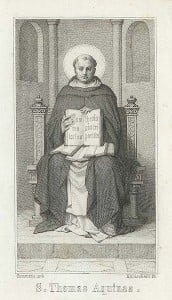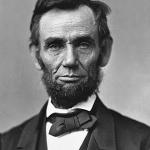 We’re blogging through St. Thomas Aquinas’ Compendium Theologiae, sometimes called his Shorter Summa. Find the previous posts here.
We’re blogging through St. Thomas Aquinas’ Compendium Theologiae, sometimes called his Shorter Summa. Find the previous posts here.
Today’s post is from Chapter 62, “Effect of Intellectual Removal of Personal Properties on the Divine Essence.”
In this chapter Thomas uses extremely technical language to ask the question, if we think about God without thinking about the Trinity, are we still thinking about God? Or to put it another way, if we take away the details of the Trinity that we’ve learned through revelation, are we still thinking about God?
If the question were to be asked whether, in consequence of the removal of the personal properties by intellectual abstraction, the divine essence would remain, the answer is that in one respect it would remain, but in another it would not.
Fairly clearly the answer must be, “Yes, we are;” for the God of the Old Testament is also the God of the New Testament. But this has implications for how we think about God in metaphysical terms.
To recap: intellectual abstraction is how we break down a thing intellectually, the better to understand it. We start by contemplating a concrete thing: the crow whose cawing wakes me up in the morning, let’s say. Then we start “abstracting away” aspects of the crow in some order, and contemplating what remains. There are two orders in which we can do this.
Intellectual abstraction can take place in two ways. The first is by abstracting form from matter. In this abstraction the mind proceeds from the more formal to the more material; the first subject remains until the end, and the ultimate form is removed first.
For example, we might consider the crow as a collection of meat, bone, feathers, and so forth; and then consider the cellular structure of meat and bone; and then the chemical composition. In this order, the first thing we abstract away is our notion of the whole thing as a crow. If I’m understanding Thomas correctly, modern science generally follows this path: what a thing is is what it is made of. In the end, we know a whole lot about this particular crow.
The second way of abstracting is by the abstraction of the universal from the particular, and this proceeds according to an order that is, in a sense, the opposite; the individuating material conditions are first removed, so that what is common may be retained.
In the second method, we start with this crow, the one that wakes me up in the morning, and consider it as a crow. We consider what it is to be a crow, and what a crow’s properties are, without worrying too much about this crow and its missing tail feather. We end up with what is common to all crows, the crow’s nature.
We can’t apply either of these approaches to God in quite the usual way.
In God, of course, there are neither matter and form, nor universal and particular.
But still, we can proceed by analogy.
Nevertheless there is in the Godhead something that is common, and something that is proper and that supposes the common nature; for, in our human way of thinking, the divine persons are to the divine essence what individual supposita are to a common nature.
God is not a composite of matter and form, as a crow is: this meat and bone in the form of a crow. But we can draw an analogy, imperfect though it may be, between “the common crow” and individual crows on the one hand and the Godhead and the Divine Persons on the other: there is a sense in which the Divine Persons arise from the Godhead as individual crows depend on the nature of “crow-ness”.
According to the first type of intellectual abstraction, therefore, if we remove the personal properties, which are the subsisting persons themselves, the common nature does not remain. But in the second type of abstraction it does remain.
In short, we cannot contemplate the Trinity without contemplating God, but we can contemplate God without consciously contemplating the Trinity.
____
photo credit: Public Domain; source Wikimedia Commons






